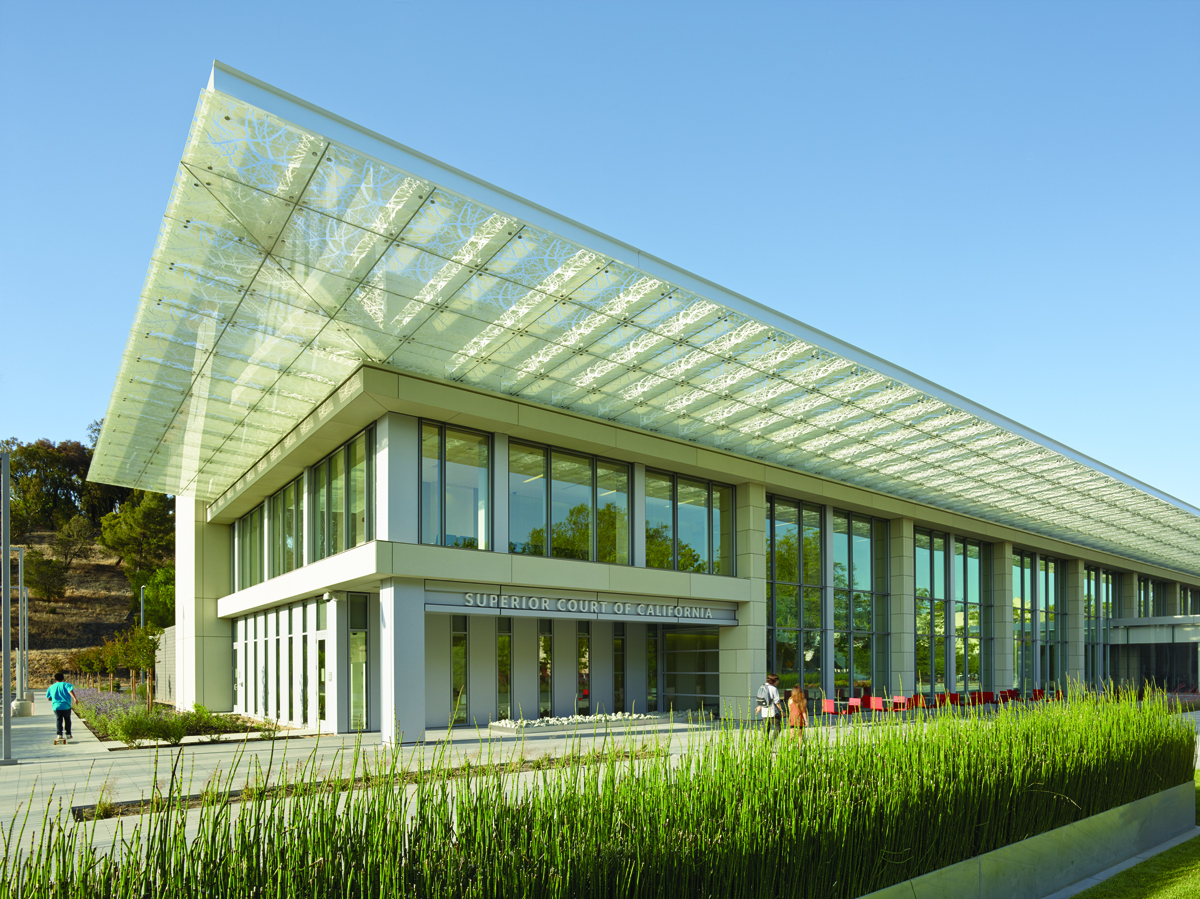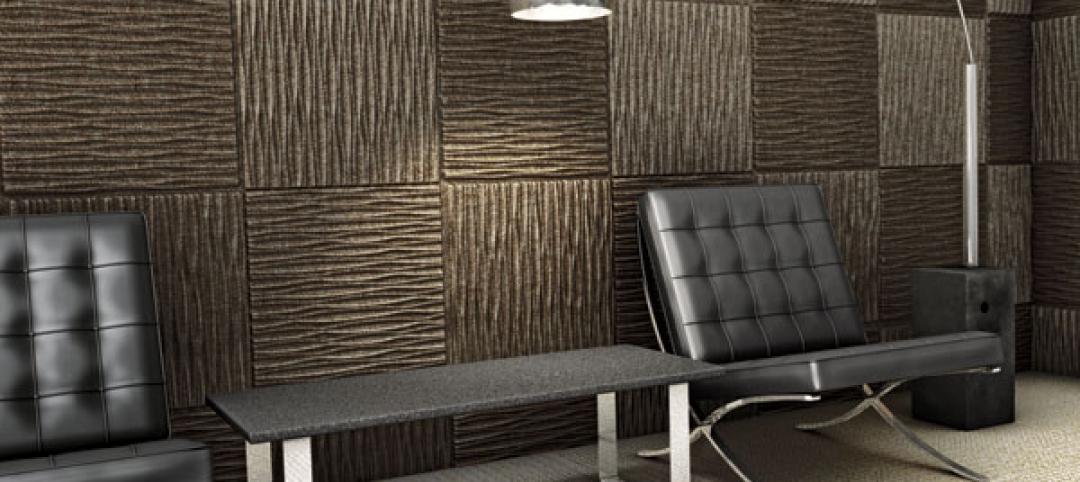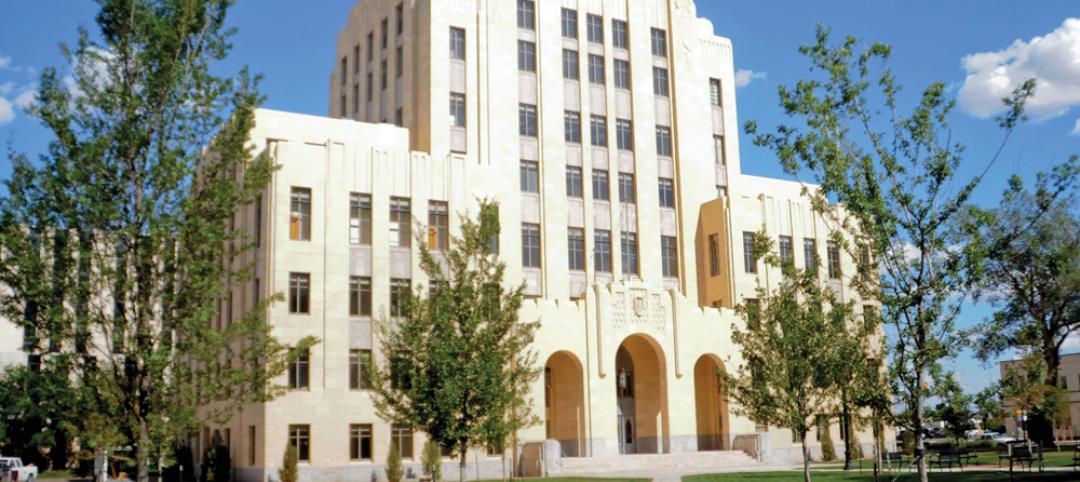It took six years, but in 2013, the Utah State Courts finally got the state legislature to approve a budget for the $34.2 million 2nd District Juvenile Courthouse, in Ogden. When it opens this May, the 85,000-sf, five-story building will include eight courtrooms, offices for judges and their 50-member staff, and space for juvenile probation services and the Weber County Sheriff’s security staff.
Projects like the Utah courthouse are luxuries for many states that, despite improving economies, are struggling to keep their heads above water.
Since the second half of 2013, state tax collections have fluctuated. They were down in the first half of 2014, then rebounded by 4.4% in the third quarter of 2014 over the same period a year earlier, according to the Rockefeller Institute of Government. The institute expects continued revenue growth in the coming quarters, but state tax collections have failed to keep pace with expenditures, especially as more states expand Medicaid coverage under the Affordable Care Act.
At least 16 states are facing serious budget shortfalls, according to the Washington Post. These include Louisiana, which is looking at a $1.6 billion deficit, which ballooned by $400 million as the price of oil—a huge source of state revenue—fell by 50%. Other states with impending deficits include Virginia ($2.4 billion), Pennsylvania ($1.8 billion), Kansas ($1 billion through FY 2016), Alabama ($950 million), and Maryland ($900 million).
The National Association of State Budget Officers (NASBO) notes that all states but Vermont either require their governors to submit or sign a balanced budget, or their legislatures to pass a balance budget. With tax increases mostly off the table, achieving balance means spending cuts. Recent data offer inconclusive clues as to the impact of those cuts on future state-funded construction and renovation work.
One snapshot—NASBO’s “State Expenditure Report 2012-2014”—projected a 5.5% increase, to $17.4 billion, in the states’ capital expenditures in fiscal 2014 for projects in an “all other” category that includes stadiums, public schools, and healthcare.
The Census Bureau’s broader estimates for public state and local construction put in place were less robust. Last year that number stood at $251.5 billion, up 2.2% from 2013, but still the second-lowest spending year since 2006.
Big-ticket categories were Roads and Bridges, Education, Transportation, and Sewage and Waste Disposal. Amusements and Recreation (which include sports stadiums) jumped 7.7% to $8.7 billion. Office construction was up 3.6% to $5.4 billion; Public Safety projects (jails, firehouses, etc.) fell by 7.9%, to $6.1 billion. Healthcare declined by 10.5%, to $6.3 billion.
Jan Frew, Deputy Administrator for Idaho’s Public Works division, reached out to several of her counterparts in the National Association of State Facilities Administrators on behalf of BD+C. Most of those contacted reported slight increases in tax revenues but only modest state-funded construction activities, she says.
Frew says that, since 2011, Idaho’s appropriations for public works have been “fairly steady,” at around $22.5 million per year. But while appropriations have recently spiked to $36 million, lawmakers aren’t confident that tax revenues will keep growing and are being cautious about adding to the state’s project funding base. Frew says the state is also reluctant to use bonds to fund projects.
Other states are looking for new ways to lower their construction costs. Illinois, Indiana, South Carolina, and West Virginia are among the states debating whether to repeal prevailing wage laws that apply to government-funded projects.
Newly elected Hawaii Governor David Ige, a Democrat, proclaimed that his state would actively seek more federal dollars to help fund state projects for housing, water, and transportation.
On the other hand, a can-do spirit is evident in Maine, where Governor Paul LePage, a Republican, recently unveiled a three-year, $2 billion, 1,900-project public works plan that, in 2015 alone, would include safety improvement projects at 76 locations, and $4 million for improvements at Portland’s International Marine Terminal.
In Michigan, the first stages of a new $88 million Welcome Center and park for the State Capitol have been initiated, even though the project’s funding mechanism isn’t in place. John Truscott, a spokesman for the Michigan State Capitol Commission, says the early work is being paid for through a $3 million allocation established last year for Capitol renovation and upkeep. The commission is seeking bond financing for the Welcome Center that would be repaid with tobacco taxes.
Related Stories
| Nov 19, 2013
Top 10 green building products for 2014
Assa Abloy's power-over-ethernet access-control locks and Schüco's retrofit façade system are among the products to make BuildingGreen Inc.'s annual Top-10 Green Building Products list.
| Nov 15, 2013
Greenbuild 2013 Report - BD+C Exclusive
The BD+C editorial team brings you this special report on the latest green building trends across nine key market sectors.
| Nov 15, 2013
Metal makes its mark on interior spaces
Beyond its long-standing role as a preferred material for a building’s structure and roof, metal is making its mark on interior spaces as well.
| Nov 13, 2013
Government work keeps green AEC firms busy
With the economy picking up, many stalled government contracts are reaching completion and earning their green credentials.
| Nov 13, 2013
Installed capacity of geothermal heat pumps to grow by 150% by 2020, says study
The worldwide installed capacity of GHP systems will reach 127.4 gigawatts-thermal over the next seven years, growth of nearly 150%, according to a recent report from Navigant Research.
| Oct 30, 2013
11 hot BIM/VDC topics for 2013
If you like to geek out on building information modeling and virtual design and construction, you should enjoy this overview of the top BIM/VDC topics.
| Oct 28, 2013
Urban growth doesn’t have to destroy nature—it can work with it
Our collective desire to live in cities has never been stronger. According to the World Health Organization, 60% of the world’s population will live in a city by 2030. As urban populations swell, what people demand from their cities is evolving.
| Oct 18, 2013
Researchers discover tension-fusing properties of metal
When a group of MIT researchers recently discovered that stress can cause metal alloy to fuse rather than break apart, they assumed it must be a mistake. It wasn't. The surprising finding could lead to self-healing materials that repair early damage before it has a chance to spread.
| Oct 15, 2013
High-rise Art Deco courthouse gets a makeover in Amarillo, Texas
Recognized as one of the most significant Art Deco courthouses in Texas, the Potter County Courthouse is modernized and restored to its 1930s aesthetic.
| Sep 24, 2013
8 grand green roofs (and walls)
A dramatic interior green wall at Drexel University and a massive, 4.4-acre vegetated roof at the Kauffman Performing Arts Center in Kansas City are among the projects honored in the 2013 Green Roof and Wall Awards of Excellence.

















